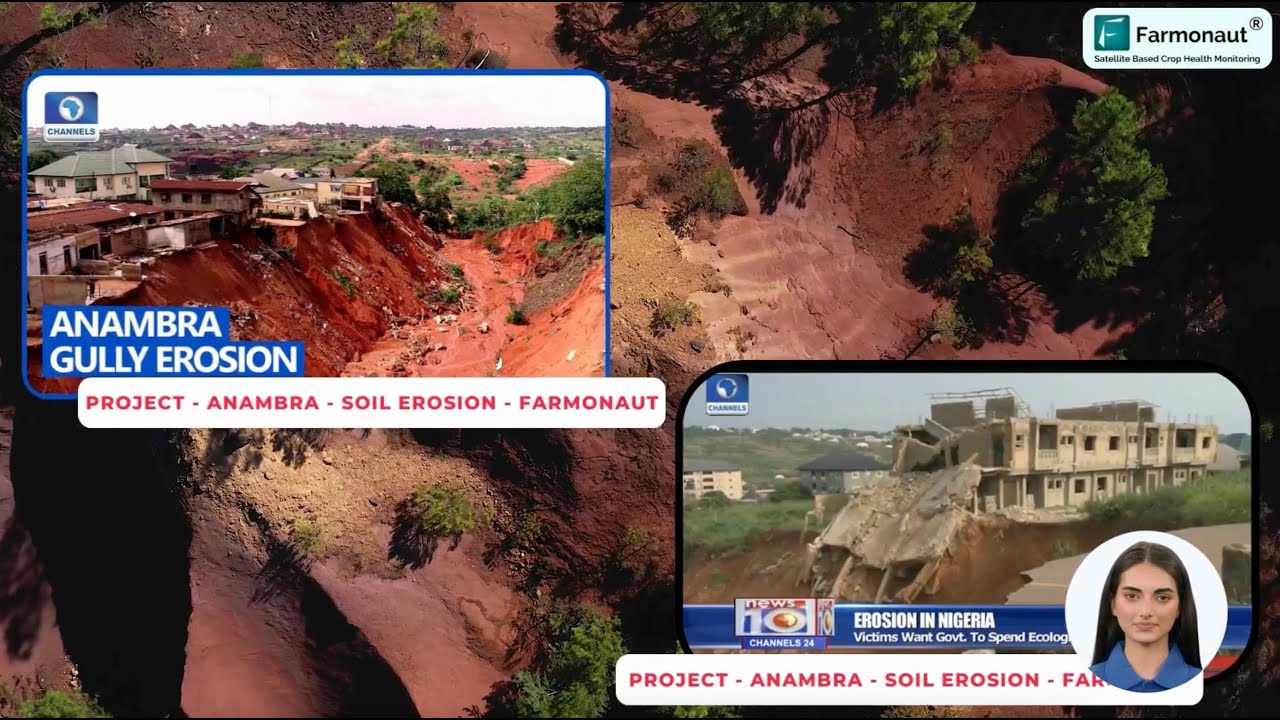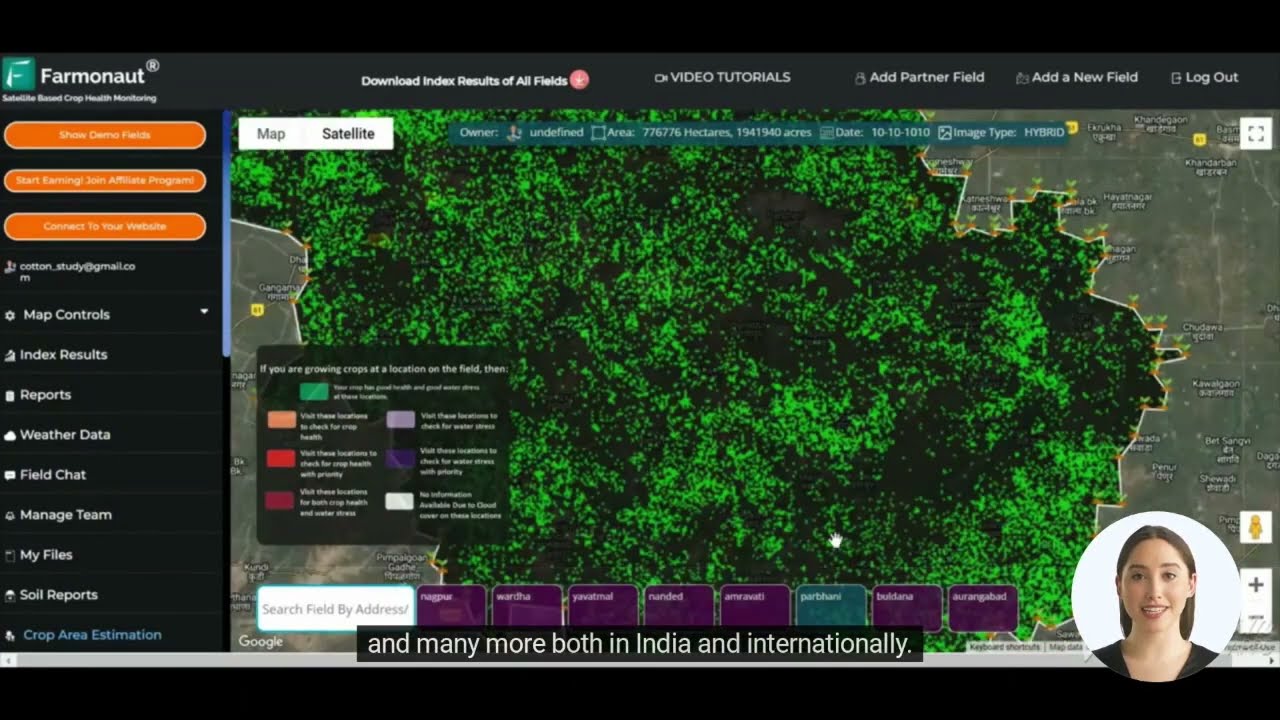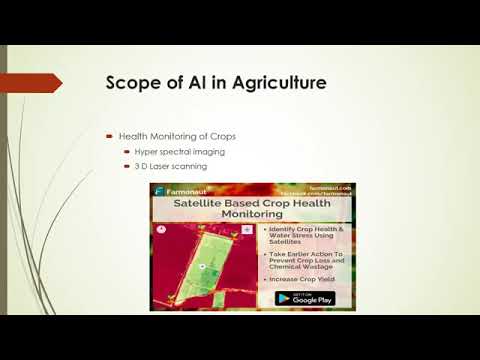Nebraska’s Water Future: Proposed Agency Merger Sparks Debate on Resource Management
“Nebraska’s proposed agency merger affects water management for 1.9 million residents and 45 million acres of farmland.”
In the heartland of America, a significant debate is unfolding that could reshape the future of water management in Nebraska. As we delve into this critical issue, we at Farmonaut recognize the importance of efficient resource management in agriculture and its impact on farmers across the state. Our satellite-based farm management solutions aim to support farmers in optimizing their water usage, a concern that resonates deeply with the current discussion in Nebraska.
The proposed merger of the Department of Environment and Energy with the Department of Natural Resources has ignited a passionate discourse among stakeholders, policymakers, and the public. This legislative initiative, aimed at creating a new Department of Water, Energy and Environment, represents a significant shift in how Nebraska approaches its water resources and environmental policy.
The Proposal: Merging for Efficiency
Governor Jim Pillen’s administration has put forward a plan that seeks to combine two crucial state agencies. The rationale behind this merger is to create efficiencies and better safeguard Nebraska’s water quality and quantity for future generations. This proposal, introduced as LB317 by Senator Tom Brandt of Plymouth, has become a focal point of discussion in the state’s Natural Resources Committee.
Key aspects of the proposal include:
- Combining the Department of Environment and Energy with the Department of Natural Resources
- Creating a new entity: the Department of Water, Energy and Environment
- Aiming to address both water quality and quantity issues more effectively
- Promising to reduce bureaucracy and create efficiencies
While the goal of streamlining operations and focusing on water issues is commendable, the proposal has met with significant opposition from various quarters.
Opposition and Concerns
At a public hearing on Thursday, representatives from key agricultural and conservation groups voiced their concerns about the proposed merger. The opposition stems from several factors:
- Lack of specificity in the proposal
- Concerns about potential distractions from water supply management efforts
- Skepticism about claimed efficiencies and cost savings
- Worries about unintended consequences on ongoing water projects
Jasper Fanning, general manager of the Upper Republican Natural Resources District, expressed concern that the merger might divert attention from critical water projects, such as the Perkins County Canal project. This initiative aims to bring South Platte River water to Nebraska from Colorado, highlighting the interstate nature of water resource management.
Bruce Rieker, representing the Nebraska Farm Bureau, cited a lack of information as the reason for the industry group’s opposition to the bill. This sentiment was echoed by other stakeholders, who felt that more details were needed to make an informed decision about such a significant change in the state’s environmental and resource management structure.
The Debate: Efficiency vs. Focus
The core of the debate centers around two main perspectives:
- Proponents argue for efficiency: Governor Pillen and his administration believe that merging the agencies will create a more streamlined approach to water management, allowing the state to better address challenges such as:
- Increasing demand from industries seeking to capitalize on Nebraska’s water supply
- Rising levels of nitrates in the state’s groundwater
- The need for a coordinated approach to water quality and quantity issues
- Opponents prioritize focused management: Critics of the proposal, including agricultural and conservation groups, contend that:
- The merger could distract from crucial water supply management efforts
- Existing agencies are already effectively addressing water-related challenges
- The lack of specifics in the proposal raises concerns about its actual implementation and impact
This debate underscores the complex interplay between government policy, environmental stewardship, and agricultural interests in Nebraska’s water management landscape.
Implications for Nebraska’s Water Future
The outcome of this proposed merger could have far-reaching implications for Nebraska’s approach to water resource management. Some potential impacts include:
- Changes in how water quality and quantity issues are addressed at the state level
- Potential shifts in the allocation of resources for water-related projects
- Alterations in the regulatory landscape affecting farmers, industries, and conservation efforts
- Possible changes in the state’s ability to negotiate interstate water agreements
As we at Farmonaut continue to provide cutting-edge satellite-based solutions for farm management, we recognize the importance of these policy discussions. Our tools, which offer real-time crop health monitoring and resource management capabilities, can play a crucial role in helping farmers navigate the changing landscape of water management in Nebraska.
The Role of Technology in Water Management
While policy debates continue, technology plays an increasingly vital role in effective water management. Farmonaut’s satellite-based crop health monitoring and AI-driven advisory systems offer farmers powerful tools to optimize water usage and improve crop yields. These technologies can complement state-level efforts to manage water resources sustainably.
Key benefits of technology in water management include:
- Real-time monitoring of soil moisture levels
- Precise irrigation planning based on crop needs and weather forecasts
- Early detection of water stress in crops
- Data-driven decision making for water conservation
By leveraging these technologies, farmers can contribute to broader water conservation efforts while maintaining productive agricultural operations.
Public Response and Stakeholder Engagement
The public hearing on LB317 revealed a diverse range of opinions from various stakeholders. Key points raised during the hearing include:
- Concerns about the potential loss of focus on specific water management issues
- Questions about the financial implications of the merger
- Doubts about the claimed efficiencies and cost savings
- Worries about the impact on ongoing water projects and initiatives
The engagement of stakeholders from agricultural, conservation, and governmental sectors underscores the importance of this issue to Nebraska’s future.
Comparative Analysis of Proposed Agency Merger
| Aspect | Current Agencies | Proposed Merged Entity |
|---|---|---|
| Agency Names | Department of Environment and Energy, Department of Natural Resources | Department of Water, Energy and Environment |
| Primary Responsibilities | Separate focus on environmental issues and natural resource management | Integrated approach to water, energy, and environmental management |
| Estimated Budget Allocation | Separate budgets for each department | Potentially consolidated budget (details not specified) |
| Staff Size | Combined workforce of about 365 employees | To be determined (potential for staff reallocation) |
| Key Stakeholders | Agricultural groups, conservation organizations, government agencies | Same stakeholders, potentially with altered relationships |
| Potential Benefits | Specialized focus on specific areas | Promised efficiencies, integrated water management approach |
| Potential Drawbacks | Possible overlap in some areas of responsibility | Concerns about loss of focus, potential bureaucratic challenges |
| Water Quality Management | Primarily handled by Department of Environment and Energy | Integrated approach with quantity management |
| Groundwater Protection | Shared responsibility between agencies | Potentially streamlined under one department |
| Conservation Efforts | Distributed across both departments | Unified strategy under new department |
| Agricultural Interests | Addressed by both departments from different angles | Potentially more coordinated approach |
| Policy Implementation | Separate policies for environmental and natural resource issues | Integrated policy development and implementation |
| Public Engagement | Separate outreach programs | Potentially unified public engagement strategy |
This comparative analysis highlights the potential changes and impacts of the proposed merger. While proponents argue for increased efficiency and integrated management, opponents express concerns about the loss of specialized focus and potential bureaucratic challenges.
The Path Forward: Challenges and Opportunities
As Nebraska grapples with this proposed change in its water management structure, several key challenges and opportunities emerge:
Challenges:
- Balancing the needs of various stakeholders, including farmers, conservationists, and urban water users
- Ensuring that the merger, if approved, doesn’t disrupt ongoing water management projects
- Maintaining focus on critical issues like groundwater depletion and water quality
- Addressing concerns about potential loss of expertise or specialization in specific areas
Opportunities:
- Potential for more integrated and holistic approach to water resource management
- Possibility of streamlined processes and reduced bureaucratic hurdles
- Chance to reassess and potentially improve the state’s water management strategies
- Opportunity to leverage technology and data-driven approaches more effectively
“The debate over Nebraska’s water future involves balancing needs of 49,100 farms against long-term environmental sustainability.”
At Farmonaut, we understand the critical importance of efficient water management in agriculture. Our satellite-based solutions provide farmers with valuable insights into crop health and water needs, supporting sustainable farming practices. As Nebraska considers this significant change in its water management approach, tools like ours can play a crucial role in helping farmers adapt and thrive.
The Role of Data and Technology in Water Management
As the debate over Nebraska’s water management structure continues, it’s crucial to recognize the growing role of data and technology in addressing water-related challenges. At Farmonaut, we leverage cutting-edge satellite technology and AI to provide farmers with valuable insights that can contribute to more efficient water use and sustainable farming practices.
Key technological advancements that can support water management efforts include:
- Satellite-based crop monitoring for precise irrigation planning
- AI-driven advisory systems for optimal water usage
- Blockchain-based traceability for water use accountability
- Remote sensing for large-scale water resource assessment
These technologies can complement state-level water management efforts, regardless of the final structure of the state agencies involved.
Public Engagement and Education
One aspect that emerged from the public hearing on LB317 is the need for greater public engagement and education on water management issues. As Nebraska considers this significant change in its approach to water and environmental management, it’s crucial to ensure that the public is well-informed and engaged in the process.
Strategies for improving public engagement could include:
- Hosting more public forums and workshops on water management issues
- Developing educational programs for schools and community groups
- Leveraging digital platforms to share information and gather public input
- Collaborating with agricultural and conservation organizations to reach diverse stakeholders
By fostering a more informed and engaged public, Nebraska can ensure that any changes to its water management structure reflect the needs and concerns of its citizens.
Looking Ahead: The Future of Water Management in Nebraska
As Nebraska stands at this crossroads in its approach to water management, several key considerations will shape the path forward:
- Adaptive Management: Regardless of the outcome of the proposed merger, Nebraska will need to adopt adaptive management strategies to address evolving water challenges.
- Technological Integration: Leveraging advanced technologies, like those offered by Farmonaut, will be crucial for efficient water use and management.
- Stakeholder Collaboration: Continued engagement with farmers, conservationists, and other stakeholders will be essential for developing effective water policies.
- Interstate Cooperation: Nebraska will need to maintain and possibly strengthen its interstate water agreements, particularly for shared resources like the Platte River.
- Climate Resilience: Future water management strategies must account for the potential impacts of climate change on water resources.
At Farmonaut, we remain committed to supporting farmers and agricultural stakeholders with our advanced satellite-based farm management solutions. Our tools can help farmers navigate the changing landscape of water management, regardless of the administrative structure at the state level.
FAQs about Nebraska’s Proposed Agency Merger and Water Management
- Q: What is the main goal of the proposed agency merger in Nebraska?
A: The primary goal is to create efficiencies and better safeguard Nebraska’s water quality and quantity for future generations by combining the Department of Environment and Energy with the Department of Natural Resources. - Q: Who are the key stakeholders in this debate?
A: Key stakeholders include agricultural groups, conservation organizations, government agencies, and the general public of Nebraska. - Q: What are the main concerns raised by opponents of the merger?
A: Opponents are concerned about potential distractions from water supply management efforts, lack of specificity in the proposal, and skepticism about claimed efficiencies and cost savings. - Q: How might this merger affect Nebraska’s farmers?
A: The merger could potentially impact how water-related policies are implemented and enforced, which could affect irrigation practices, water allocations, and environmental regulations for farmers. - Q: What role can technology play in addressing Nebraska’s water management challenges?
A: Technologies like satellite-based crop monitoring, AI-driven advisory systems, and blockchain-based traceability can help optimize water usage, improve crop yields, and enhance accountability in water management.
Conclusion: A Watershed Moment for Nebraska
The proposed merger of Nebraska’s environmental and natural resource agencies represents a watershed moment in the state’s approach to water management. As the debate continues, it’s clear that the outcome will have far-reaching implications for farmers, conservationists, and all Nebraskans who rely on the state’s water resources.
While the path forward remains uncertain, one thing is clear: effective water management will require a combination of sound policy, stakeholder engagement, and innovative technology. At Farmonaut, we stand ready to support Nebraska’s agricultural community with our advanced satellite-based solutions, helping farmers optimize their water use and contribute to the state’s water conservation efforts.
As Nebraska navigates this crucial decision, we encourage all stakeholders to stay informed, engaged, and committed to finding solutions that balance the needs of agriculture, conservation, and long-term sustainability. The future of Nebraska’s water resources depends on the collective efforts of all who call this great state home.
To learn more about how Farmonaut’s satellite-based farm management solutions can help you optimize your water usage and improve crop yields, visit our website or download our app today.
For developers interested in integrating our satellite and weather data into their own systems, check out our API and API Developer Docs.
Earn With Farmonaut: Join our affiliate program and earn 20% recurring commission by sharing your promo code and helping farmers save 10%. Onboard 10 Elite farmers monthly to earn a minimum of $148,000 annually—start now and grow your income!






















